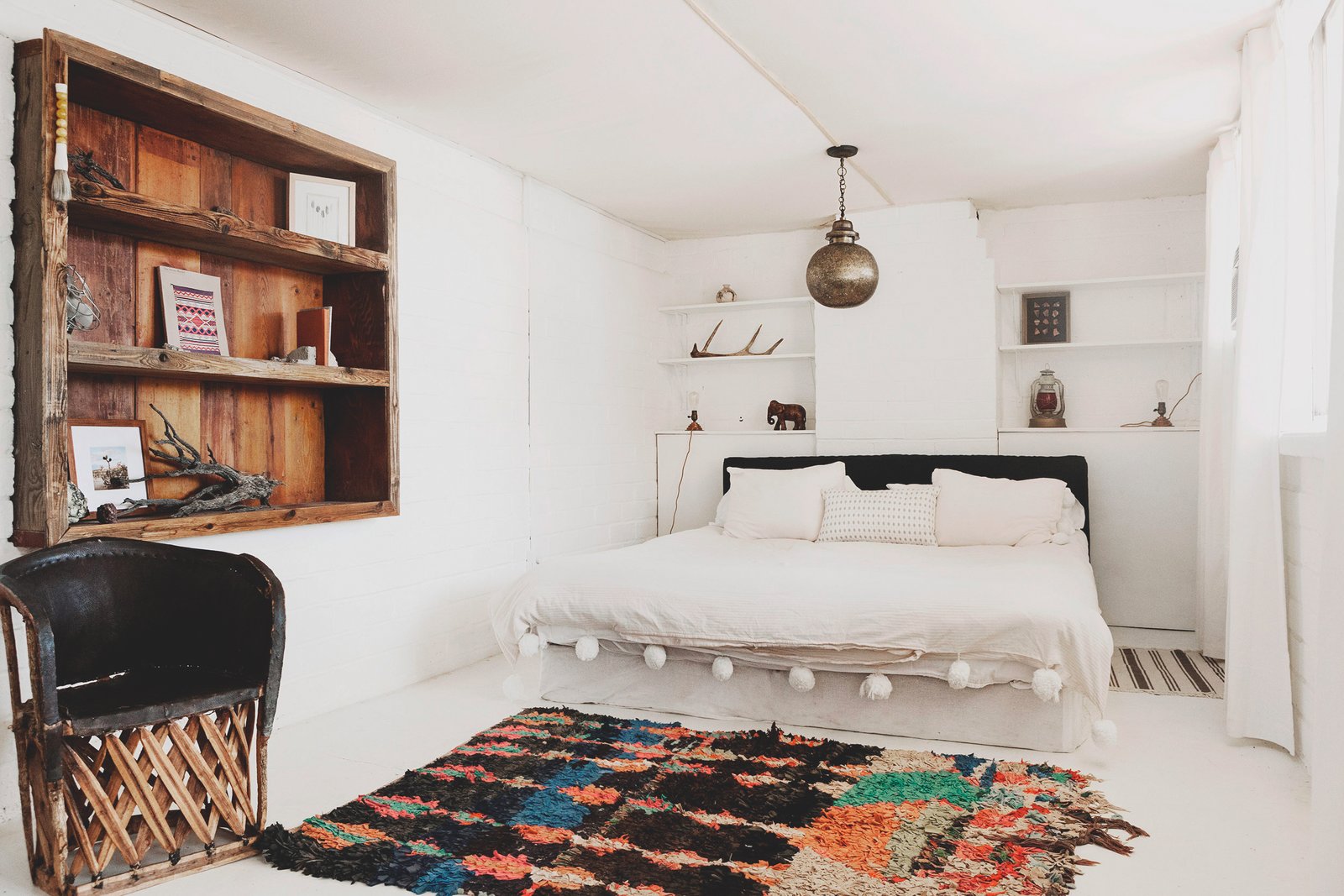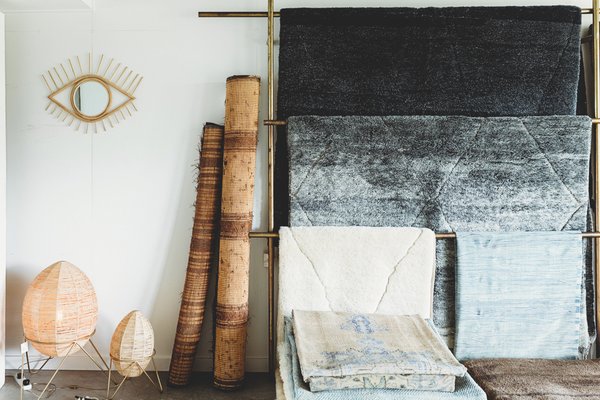In an increasingly digitized world, the handmade charm of Berber rugs injects much-needed tactility into home interiors.

Weaving has been intrinsic to the culture of the semi-nomadic Berber peoples of North Africa for centuries. Their rugs and tapestries thrive on imperfections, with crooked lines and asymmetrical compositions that are both geometric and soulful, minimalist and lively.
Traditionally Berber rugs were made by women deftly weaving tapestries from wool or recycled textiles at home, with little changing from generation to generation, while the men were working outdoors tending to sheep and goat herds. It was not until around the 1920s that European tastes evolved and decided that these traditional weaves were now "modern."

A Pampa rug draped amidst the landscape that inspired it.
Photo Victoria Aguirre, The New Mediterranean, gestalten 2019
Le Corbusier is credited with turning the heads of his fellow modernists to Berber weaving traditions. He used Beni Ourain carpets when he designed Villa La Roche in Paris in 1923–25. There are several rugs of the same tradition on the floor of Villa Mairea, Alvar Aalto’s rural retreat in Finland, and a photo taken in 1938 of Frank Lloyd Wright’s Fallingwater in Pennsylvania shows yet another.

Tigmi Trading imports new and vintage rugs from Morocco to their boutique in Byron Bay.
Photo Alicia Taylor, The New Mediterranean, gestalten 2019

Tigmi Trading, Australia
Photo Bridget Woods, The New Mediterranean, gestalten 2019
See the full story on Dwell.com: How Beni Ourain Rugs Made It From the High Atlas Mountains to Our Homes

No comments:
Post a Comment